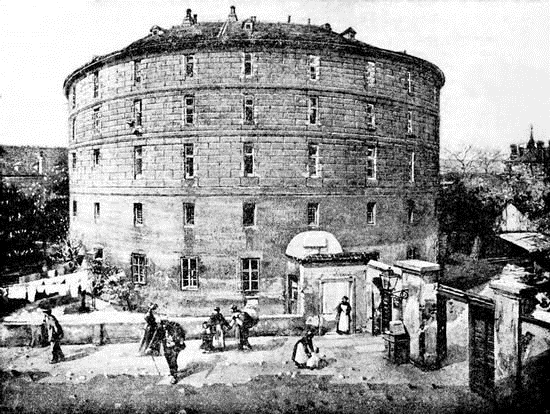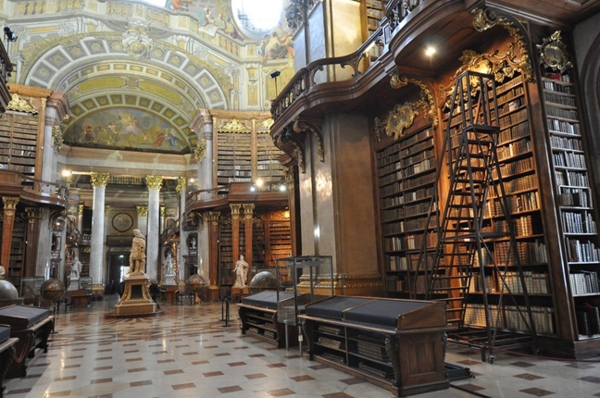Part 1: Hospitals and Medical Schools

[아츠앤컬쳐] 현재 사회복지제도가 가장 잘 된 지역은 북유럽과 중유럽이다. 보건 분야에서는 1365년에 설립된 오스트리아의 비엔나대학교가 권위를 인정받고 있다. 1399년의 교수진 파일이 오늘날에도 존재하며, 이 문서에는 교수들이 이발사, 조산사, 지역 지주들 간의 분쟁에 중재자로 요청되었다고 기록하고 있다. 비엔나의과대학의 면허가 있어야 오늘날의 북부오스트리아와 남부오스트리아, 바이에른 일부 지역에서 의사로 개업할 수 있었다.
18세기 비엔나의과대학은 신성로마제국의 마리아 테레지아(오스트리아제국과 헝가리왕국의 황후, 16 자녀를 둠)의 개인 주치의인 네덜란드 의사 제라르 반 스비텐이 오스트리아 보건 서비스와 의과대학 교육을 혁신시키면서 국제적으로 인정받게 되었다. 그는 1770년 마리아 테레지아가 시행한 합스부르크 왕가의 위생 개혁인《 레 사니타티스의 일반 규범》의 제안자였다. 그는 식물원, 화학실험실을 세우고 임상 교육을 도입했으며, 1745년부터 제국 도서관의 사서이기도 했다.
오스트리아제국과 헝가리왕국은 일반 공중보건법을 성문화하고 제국법령을 도입하여 헝가리 왕립 총독평의회의 법령에 따라 의료 서비스의 적응과 함께 효력을 갖게 되었다. 헝가리는 오스트리아 제국에 이어 이 법을 도입하고 헝가리 대학에 의료진을 만든 두 번째 왕국이 되었다.

반 스비텐이 최초로 비엔나의과대학의 기초를 마련한 후, 의학계 명사들이 제국의 수도에서 가르치고 연구하며, 현재 우리가 병상교육이라고 부르는 것을 전형적인 훈련 방법으로 격상시켰다. 그 기원은 비엔나종합병원(AKH)인데, 1693년 레오폴트 1세 황제가 세운 ‘빈자와 병자를 위한 집’을 재조직한 것으로, 1784년 8월 16일 요제프 2세의 명령으로 유럽 최초의 현대식 병원인 병자를 위한 종합병원으로 재개관하였다.
병원 단지의 디자인은 프랑스의 오뗄 디유 병원을 모델로 만들어졌다. 병원 근처에는 고아원, 산부인과 병동 그리고 이시도르 카네발레가 지은 정신질환자 수용시설인 세계 최초의 건물 나렌투름(일명 바보들의 탑)이 있었다. 원통형 5층 건물에 약 200~250명의 정신질환자를 위한 총 139개의 병실이 있고, 각 병실에는 환자를 묶기 위한 튼튼한 격자문과 철제 고리가 장착되어 있었다. 하지만, 정신질환자 치료 개념이 혁신되어 개원한 지 10년 만에 그 탑은 쓸모없게 되었다.

19세기에 비엔나종합병원은 비엔나의과대학의 중심지가 되었다. 여기에서 이그나츠 젬멜바이스는 위생을 연구하였으며, 카를 란트슈타이너는 혈액형 그룹을 발견하였고, 페르디난트 리터 폰 헤브라는 피부과의 기초를 세우고 레오폴트 쇤바우어는 최초로 외과를 열었다.
19세기에 제2 비엔나의과대학이 만들어졌다. 의사와 학생들은 교수와 학문의 자유 원칙을 위해 성공적으로 노력하여 기초의학의 확장, 전문화를 이루어냈다. 또한, 세계 최초의 피부과, 안과, 이비인후과 병원이 비엔나에서 설립되었다. 1897년, 의사 가브리엘 포사너는 비엔나대학교에서 박사가 된 첫 여성이다. 1900년에 비로소 여성도 의학 연구에 참여하게 되었다.
Part 1: Hospitals and Medical Schools
As you may know, central and northern Europe has one of the most advanced Social welfare System in place. In Austria the beginning was the introduction of the Alma Mater Rudolphina, which was founded in 1365, and a universally recognised authority in matters of health. Faculty files dating back to 1399 still exist today and they document that it was called upon as a mediator in disputes between barber-surgeons, midwives and regional landlords. In what is now Upper and Lower Austria and parts of Bavaria, only medical doctors licenced by the Medical Faculty of Vienna were allowed to practice.

In the 18th century the Vienna Medical School became international recognised when the Dutch physician Gerard van Swieten, who was from 1745 the personal physician of the Holy Roman Empress Maria Theresa (Empress of Austria and Queen of Hungaria, mother of 16 Children) transformed the Austrian health service and medical university education. He was the proposer of the main sanitary reform in the Habsburg Monarchy, "Generale Normativum in Re Sanitatis", implemented by Maria Theresa in 1770. He founded a botanical garden, a chemical laboratory and introduced clinical instruction. Since 1745 he was also librarian for Maria Theresa in what was then the Imperial Library.
With the introduction of the General Public Health Law(Hauptsanitätsnormativ) as a codified summary, the Empire of Austria and the Hungarian Kingdom introduced the imperial legislation and became effective by the concerning decree of the Royal Governor’s Council of Hungary, with adaptation regarding medical services, medical professionals’ (physicians, surgeons and midwives) Hungary became the second Kingdome after Austrian Empire who introduced this law and create medical faculty at the Hungarian university.
After van Swieten laid the foundation for the First Vienna Medical School, medical luminaries taught and performed their research in the imperial capital and elevated what we now call bedside teaching to a paradigmatic training method. One of the places have been the Vienna General Hospital (Allgemeines Krankenhaus der Stadt Wien) who’s origin goes back to the restructuring of the "Home for the Poor and Invalid", which was founded by Emperor Leopold I in 1693. On order of Emperor Joseph II, the building was reopened on 16 August 1784 as the “General Hospital for the Sick” one of the first modern Hospitals in Europe.

The conceptual design of the hospital complex was modeled after the Hôtel-Dieu de Paris in France. Adjacent to the hospital was an orphanage, a maternity ward, and the first building worldwide for accommodating mentally ill patients, the socalled “Narrenturm“, or “Fool’s Tower”, constructed by Isidore Canevale. The cylindrical building consisted of 5 floors with a total of 139 rooms for approximately 200 to 250 psychiatric patients. Each patient cell was equipped with strong lattice doors and iron rings for chaining patients. However, only 10 years after its opening, the tower was obsolete because of innovations in therapeutic concepts for the mentally ill.
In the 19th century, Vienna General Hospital became the center of Vienna Medical School, one of the most renowned centers of medical research. Here Ignaz Semmelweis made his observations of hygiene, Karl Landsteiner discovered the groups of blood types, Ferdinand Ritter Von Hebra, found the Wiener Schule der Dermatologie and Leopold Schönbauer was entrusted with heading the first surgical clinic in Vienna.
In the course of the 19th century, the Second Vienna Medical School emerged. Doctors and students successfully fought for the principle of freedom of teaching and of learning. Basic medical science expanded and specialisation advanced. Furthermore, the first dermatology, eye, as well as ear, nose and throat clinics in the world were founded in Vienna! In 1897, Dr. med. Gabriele Possaner is the first woman to receive a doctoral degree at the University of Vienna. In 1900, the first women are admitted to the study of medicine.

글 | 볼프강 슬라빈스키 Wolfgang Slawinski
서울명예시민, 한·오스트리아협회 부회장

